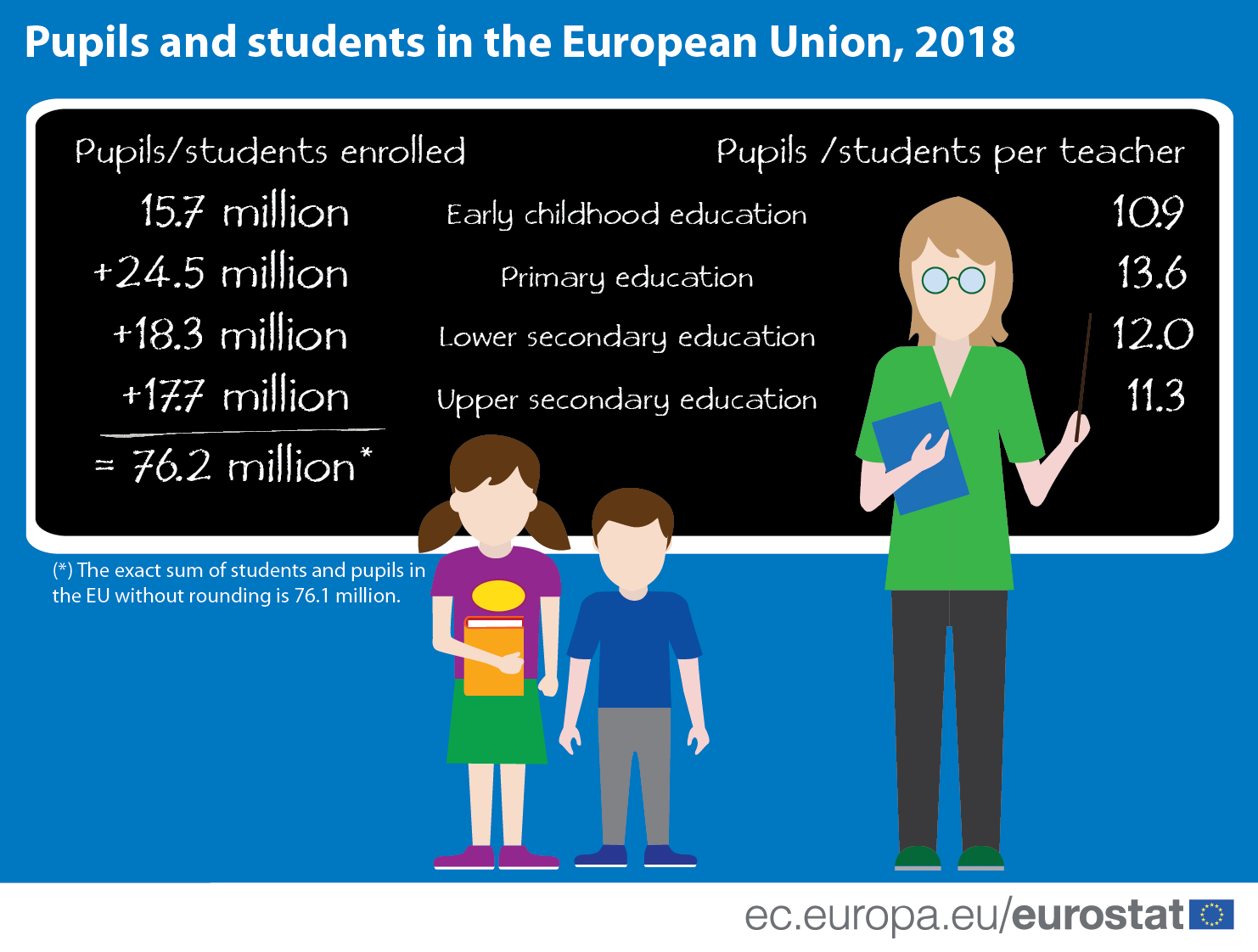All across the European Union (EU), the COVID-19 pandemic forced urgent school closures in order to slow down the spread of the virus. Lessons were moved from classrooms to various home learning solutions based on email, educational portals and video conferencing, although the situation is starting to return to normal in many countries.
How many pupils and students in primary and secondary education in the EU were affected by this situation? The most recent available official data are from 2018, when there were 15.7 million children in early childhood education. In primary education, typically starting at ages 5 to 7 years old and lasting around six years, there were 24.5 million pupils enrolled.
Secondary education is divided in lower and upper level. In 2018, 18.3 million students were enrolled in lower secondary education, with students typically entering when they are 10 to 13 years old, typically finishing nine years after the start of primary education when students are at an age of 15-16 year old. Finally, there were 17.7 million students in upper secondary education in 2018, covering both general studies and vocational studies. Upper secondary school typically ends 12-13 years after the students entered their primary education.
Altogether, there were around 76.2 million pupils and students enrolled in schools and pre-schools in the EU across all of these education levels; however, the exact sum without rounding was closer to 76.1 million.
Source datasets: educ_uoe_enra02 and educ_uoe_perp04
The professionalism, dedication and inventiveness of the teachers and academic staff are critical to the successful continuation of the education of our children during this exceptional period.
The administrative education statistics also provides information on how many students each teacher is responsible for – on average – at each of these education levels. For the pre-school children, there was on average one educator per 10.9 children in 2018. For primary school, the classes were somewhat larger, with on average 13.6 pupils per teacher.
At secondary level, teachers are usually specialised and teach specific subjects to different classes. On average in the EU, there were 12.0 students per teacher at lower secondary level and 11.3 at upper secondary level in 2018.
Notes:
- Data by levels of education are classified according to ISCED 2011. The figures presented refer to pupils and students enrolled at early childhood education (ISCED level 0), at primary level (ISCED level 1), at lower secondary level (ISCED level 2) and at upper secondary level (ISCED level 3) as well as teachers and academic staff teaching at these levels.
- The pupil/student-teacher ratio is calculated by dividing the number of full-time equivalent pupils/student by the number of full-time equivalent teachers teaching at that ISCED level. This ratio should not be confused with average class size as it does not take into account special cases, like the small size of groups of special needs pupils or specific subject areas, or the difference between the number of hours of teaching provided by teachers and the number of hours of instruction prescribed for pupils.
- For more information on statistics available in this area, please check Eurostat’s web section dedicated to education and training statistics.
- The European Union (EU) includes 27 EU Member States. The United Kingdom left the European Union on 31 January 2020. Further information is published here.
To contact us, please visit our User Support page.
For press queries, please contact our Media Support.


